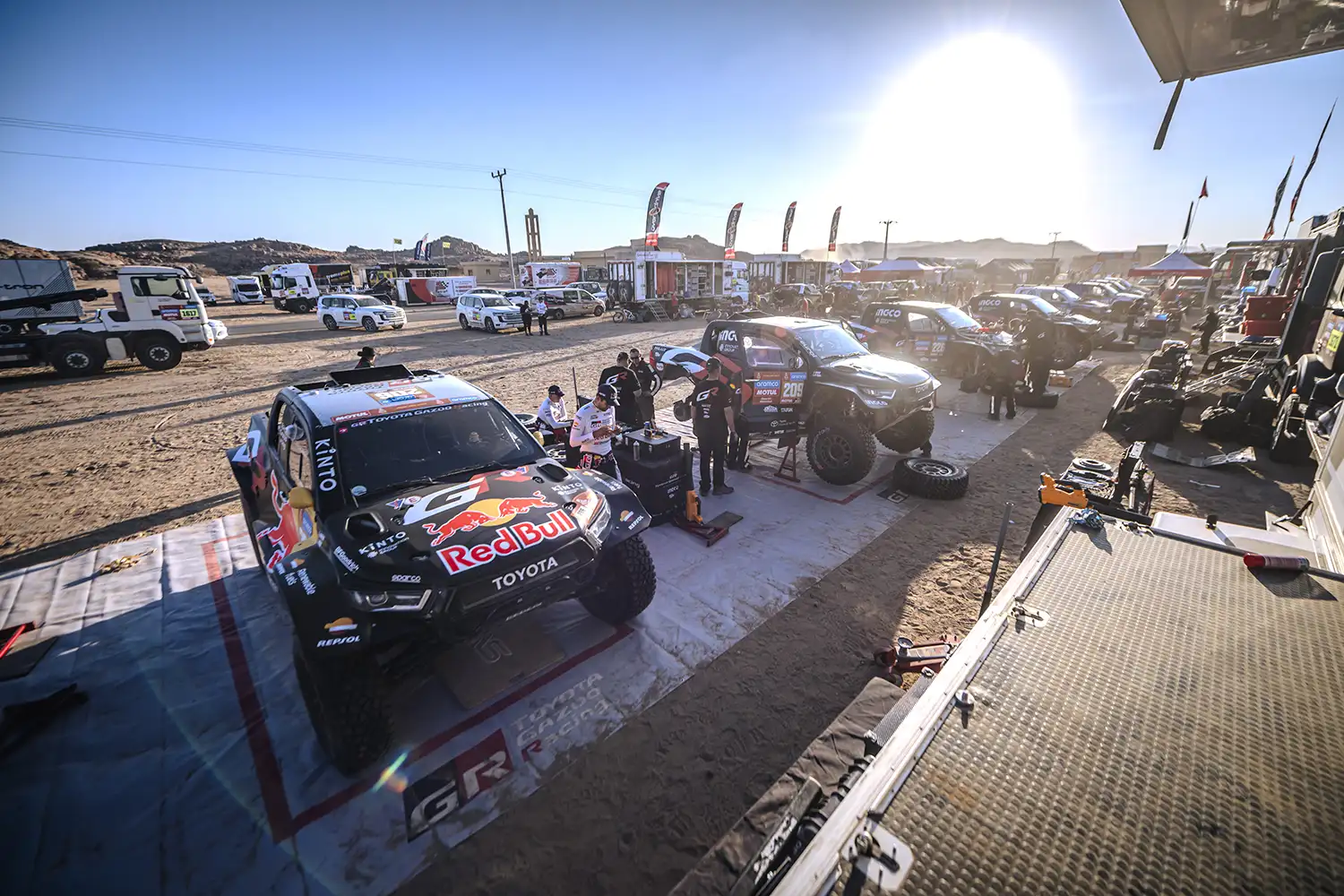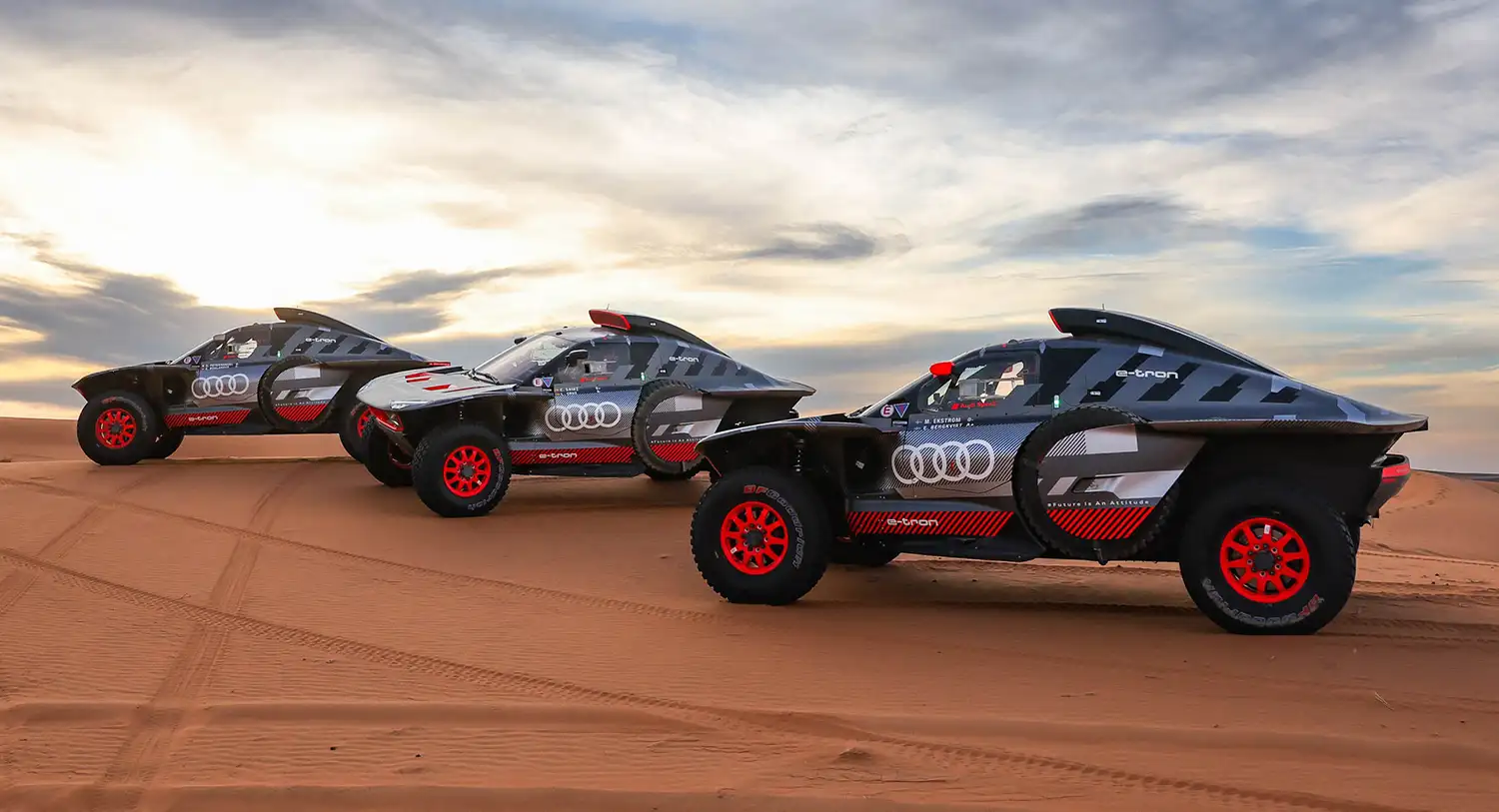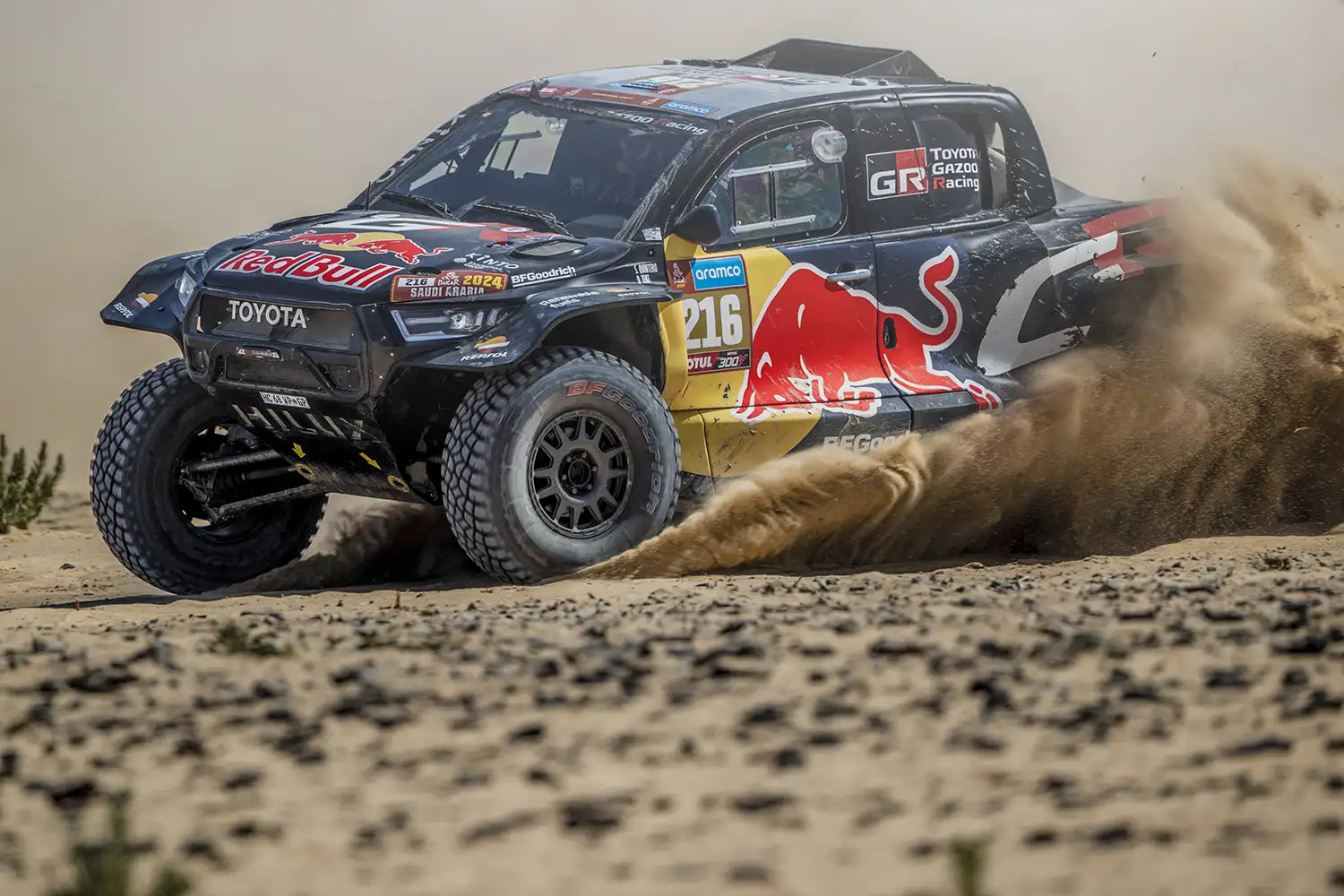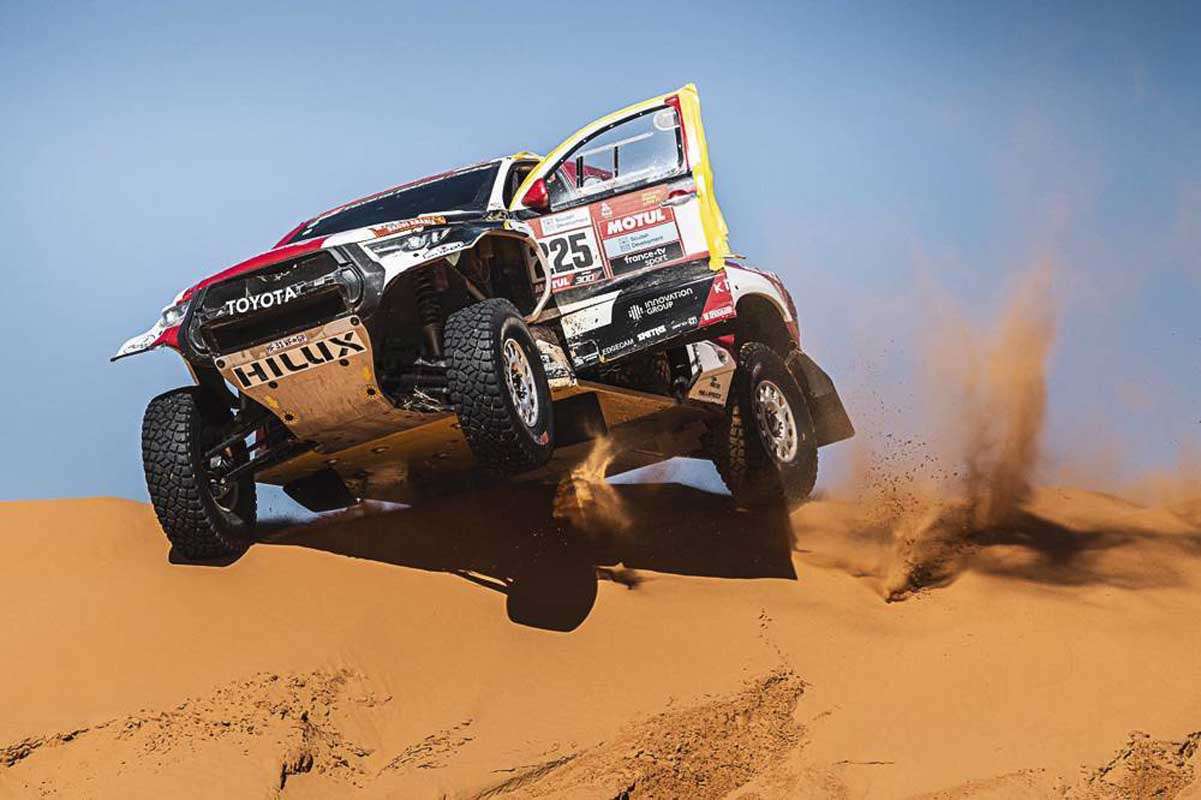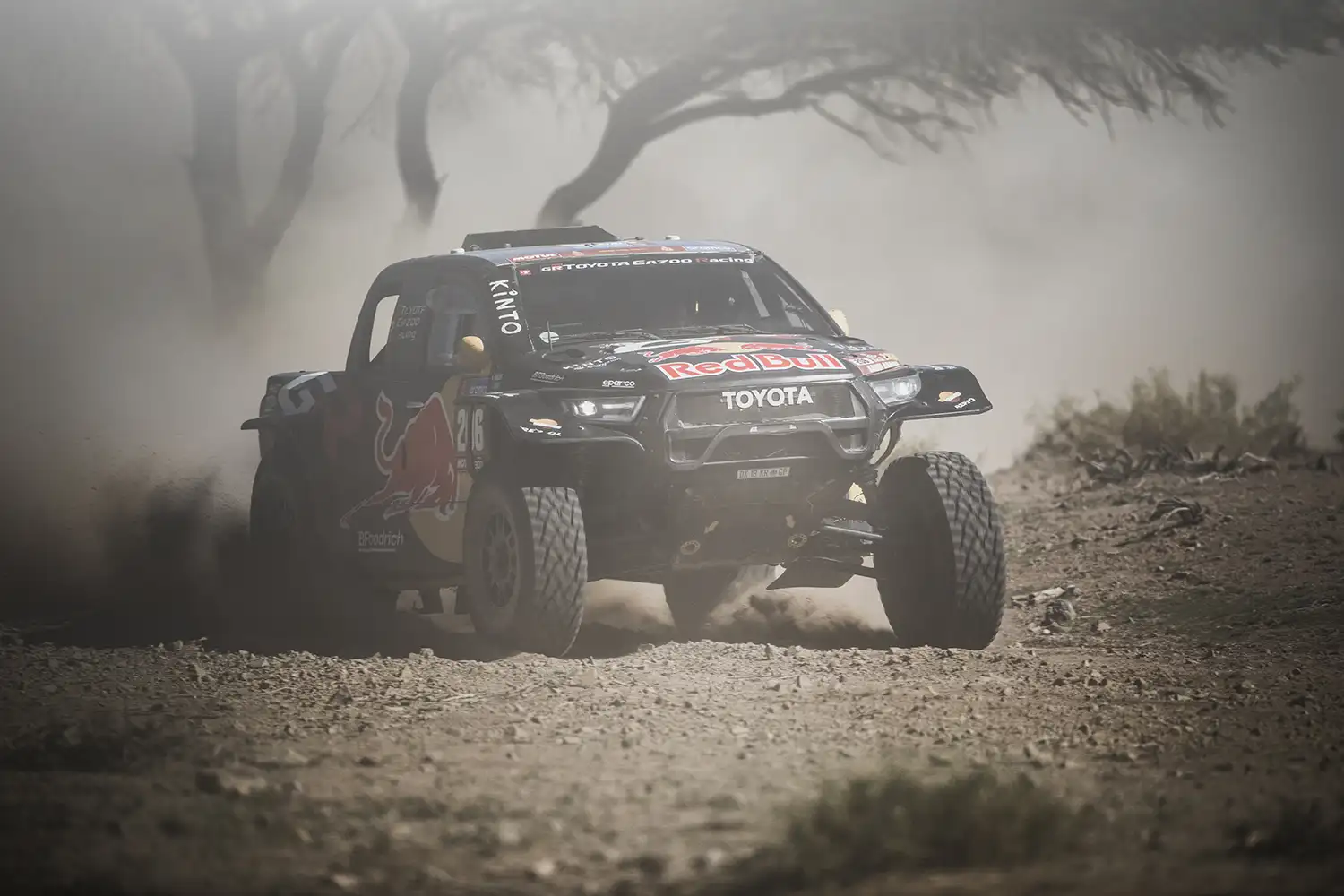
In the diverse and testing landscapes of the Dakar Rally, where every rise and fall of the terrain hides a peculiar navigational puzzle, the co-driver’s role emerges as a critical dance of precision and foresight. Episode six of ‘In The Dust’ features driver Lucas Moraes and his co-driver Armand Monleón, joined by navigation legend Mathieu Baumel and roadbook master Jordi Viladoms, as they unveil the secrets of traversing unknown territories without getting lost.
The roadbook, a guide through the intricacies of the Dakar, is made up of figures, numbers, drawings, and notes, forming a lexicon – a shared language of navigation essential for interpreting the roadbook’s complexities. Armand explains that, beyond this general lexicon, each driver-co-driver duo has its own, translating the roadbook directions into a language more intelligible between them.
The co-driver, also known as the navigator, is tasked with reading the roadbook and consistently conveying directions to the driver, often talking for several uninterrupted hours. “I don’t know how they do it,” admits Lucas. “When we’re driving these cars, it’s really like a full attack, the whole stage long. So considering the speed we are going at, they keep reading all the time. If you think of the pace, 200 metres, 300 metres are being covered very fast. So it’s a really tough job,” he adds.
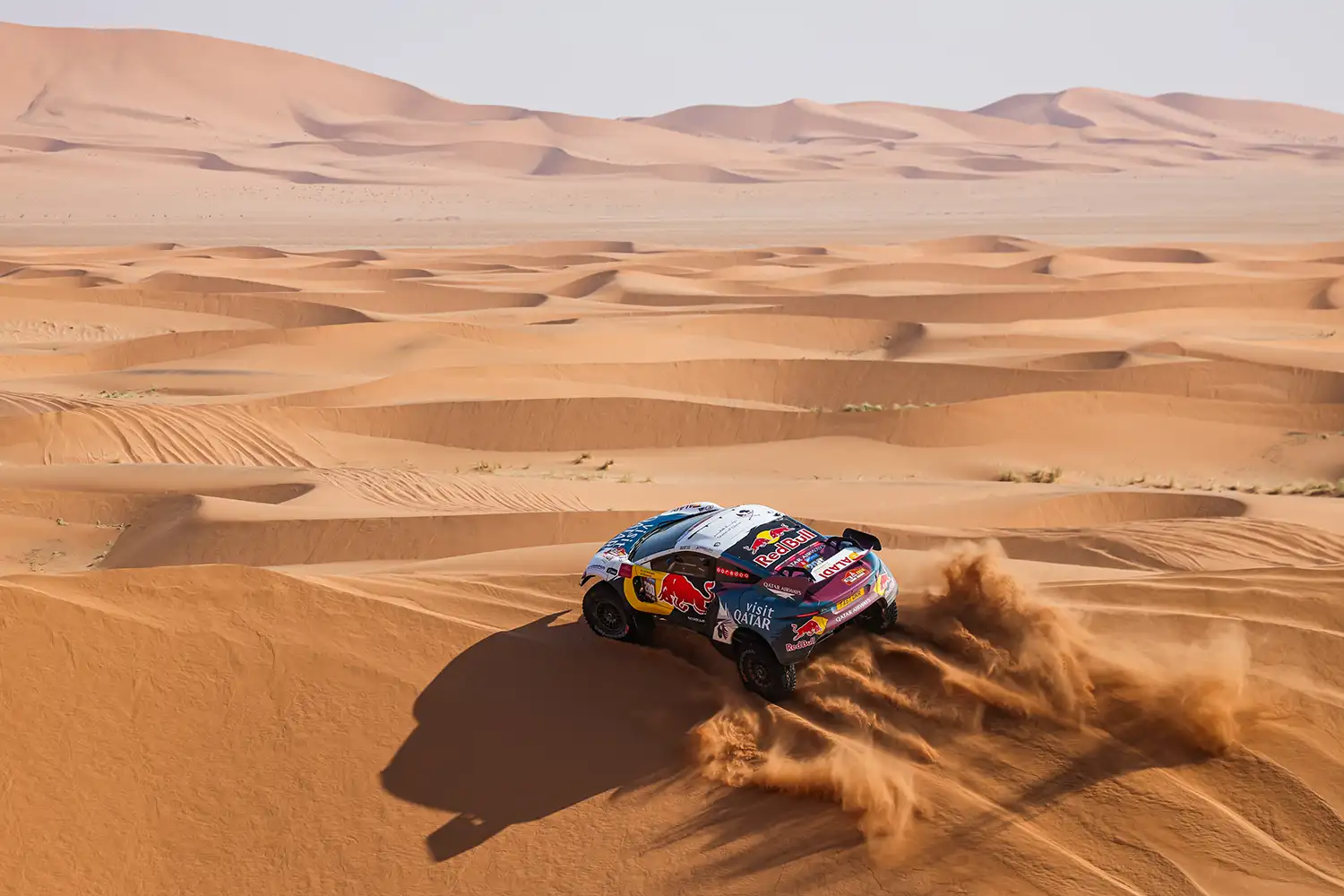
Roles within the duo are also distinctly defined, with the driver solely managing the car and looking at the way ahead, and the co-driver providing directions while interpreting the roadbook. This clear division ensures that neither suffers from travel sickness while racing over unstable terrains. Armand explains: “The secret is – we call it – switching mode. It means either you’re navigating or you’re looking at what the car is doing. If you are doing both modes at the same time, that’s when you get sick.”
But “switching mode” sometimes is not enough of a safeguard against travel sickness, especially for someone prone to it. That’s the case for Lucas as the condition runs in his family. He recalls a time during the Dakar that he was significantly affected by this feeling: “I had a bad [bout of travel sickness] in Stage 5. I didn’t take enough of the proper medication before the race and couldn’t make it. I completely lost concentration, didn’t see a dune, and rolled the car.”
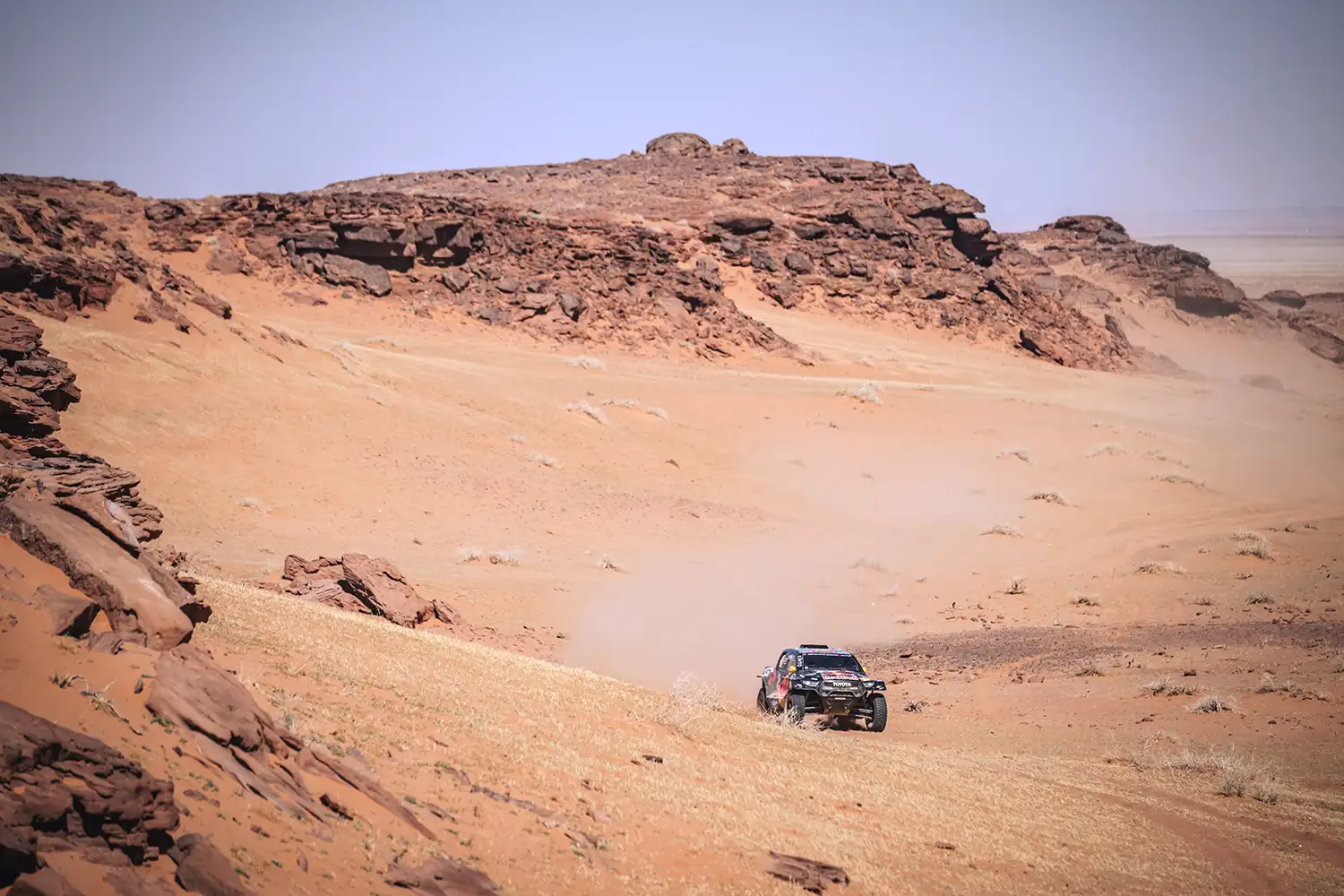
Moving across the expansive Saudi landscapes, the risk of losing one’s way is ever-present, but for Lucas, the lesson is clear: always follow the co-driver. The Brazilian stresses the importance of complete trust in his co-driver, even when instinct suggests otherwise.
He shares an experience: “What happened was that we were opening the stage – we won the previous one -, and we were trying to find one of the waypoints. He [Armand] told me, ‘No, go right.’ And I thought ‘No, [the waypoint] is never going to be on the right,’ and it was on the right. I learned to always follow what the co-driver says. You trust him, and the co-driver trusts your driving style. And that will make a good crew.”
When asked about who faces the tougher role, both guests acknowledge it as a 50/50 responsibility. However, Lucas emphasises that the co-driver’s role carries greater significance, given the formidable challenge of relaying extremely precise information at an intense pace. Armand elaborates: “Most people think the navigator’s job is solely to avoid getting lost. But this is not all. The navigator also has to provide maximum details to the driver so that they can push the car at the maximum speed.”

The episode also features insights from Mathieu Baumel, the co-driver for Nasser Al-Attiyah, and Jordi Viladoms, the roadbook guru. Mathieu echoes Lucas’ sentiment of the trust needed between driver and co-driver, while Jordi sheds light on the meticulous process of creating a roadbook, scouting terrains first by himself on a bike, recreating the route on a computer, verifying the accuracy of the prototype roadbook on-site, and the anticipation required to interpret it on the fly.
As Mathieu demonstrates how to read the roadbook, he also reveals that co-drivers receive all the information only five minutes before the start. He says: “I discover the roads while driving during the stage. You can’t prepare anything ahead of the race. Therefore, you need to have good anticipation to check the information, and see what will happen next.”
And should they take an unexpected turn amidst the twists of the roadbook, there’s no need for concern. As Mathieu aptly puts it, getting lost during the Dakar Rally is ‘too easy sometimes,’ almost as if it were a rite of passage for these elite athletes.




